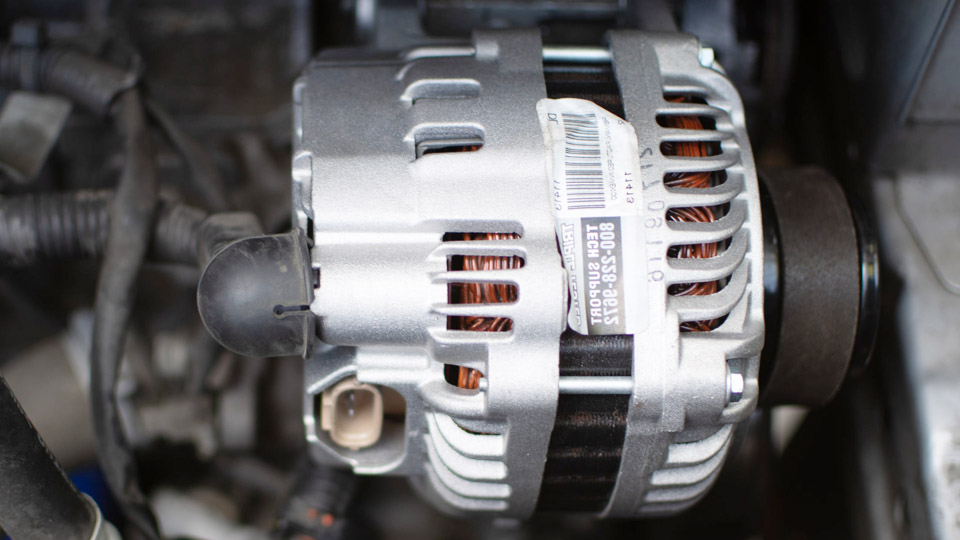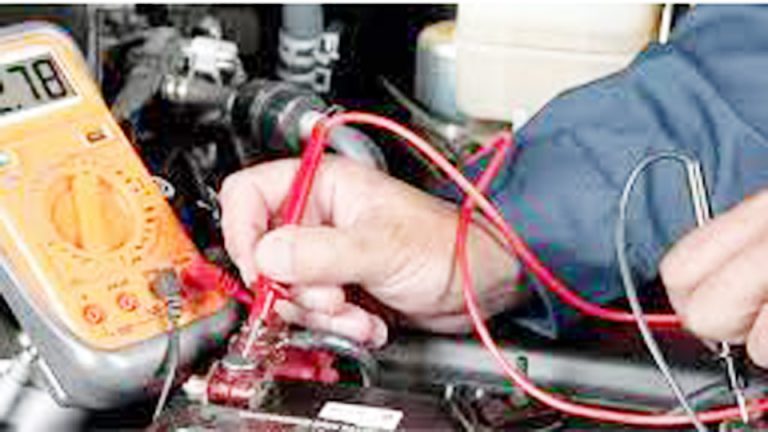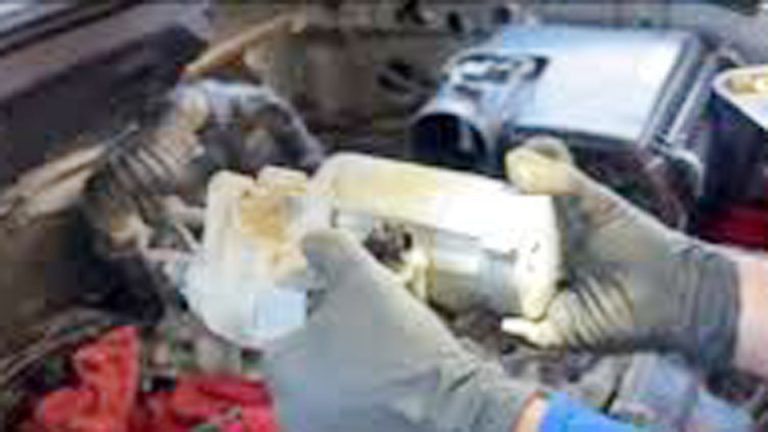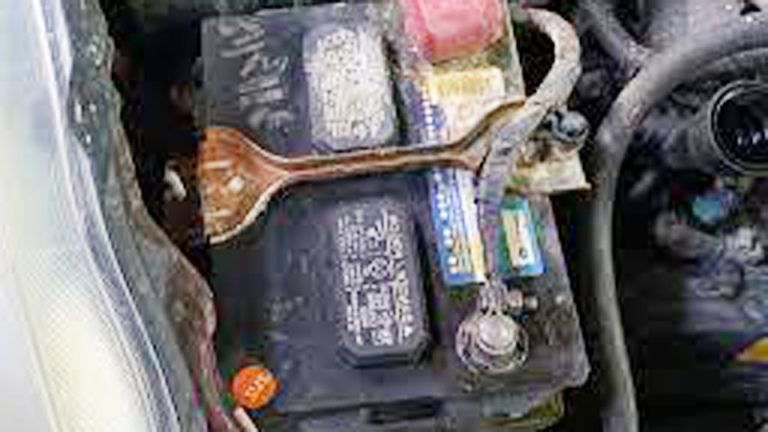You’re cruising down the highway, tunes blasting, when suddenly your dashboard lights start flickering like a Christmas tree gone wild. You pull over, pop the hood, and realize your alternator’s toast. Now you’re wondering, “How far can a car drive without an alternator?” I’ve been in this exact spot with my old Chevy pickup, and let me tell you, it’s not a fun place to be.
As someone who’s spent years tinkering with cars—from classic muscle cars to modern SUVs—I’m here to break it down for you. I’ll explain what happens when your alternator fails, how far you can realistically drive, and what you can do to avoid getting stranded. If you’re a newbie driver or a gearhead, I’ve got you covered with practical tips and real-world insights.

Image by autozone
What Does the Alternator Do?
Before we get into how far you can drive, let’s talk about what the alternator does. Think of the alternator as your car’s power plant. It generates electricity to keep your battery charged and powers all the electrical systems—like lights, radio, and even the engine’s computer—while you’re driving. Without it, your car relies solely on the battery, and trust me, that battery isn’t going to last long.
I learned this the hard way with my 1999 Honda Civic. The alternator died on a road trip, and I thought I could “just keep going.” Spoiler: I didn’t get far. The battery drained faster than my phone on a Netflix binge, and I was stuck on the side of the road. Understanding the alternator’s role is key to knowing your limits.
Why Does the Alternator Fail?
Alternators don’t just give up for no reason. Over time, wear and tear can take a toll. Here are the most common culprits I’ve seen in my years of working on cars:
Worn-Out Bearings: The alternator has moving parts that can wear out, causing it to seize up or fail. I heard a loud whining noise in my old Ford Mustang before the alternator gave out.
Faulty Voltage Regulator: This part controls how much electricity the alternator produces. If it fails, the alternator might overwork or stop working altogether.
Broken Belt: The alternator is driven by a belt connected to the engine. If the belt snaps, the alternator stops spinning. This happened to my neighbor’s Toyota Camry, and it was a quick fix once we replaced the belt.
Electrical Issues: Corroded connections or short circuits can fry the alternator. I’ve seen this in older cars with rusty wiring.
Knowing why the alternator fails can help you spot the signs early, but once it’s gone, the big question is: how far can you go?
How Far Can You Drive Without an Alternator?
Here’s the short answer: not very far. Without an alternator, your car is running on battery power alone, and most car batteries aren’t designed to last long without being recharged.
On average, you might get 30 minutes to an hour of driving, or roughly 20 to 50 miles, depending on your car and how much electrical load you’re using. But let me break it down with some real-world factors.
Battery Capacity
The size and condition of your battery play a huge role. A standard car battery is rated in amp-hours (Ah), usually between 40 and 80 Ah. Let’s say your battery is fully charged at 60 Ah.
If your car’s electrical systems draw 20 amps (a rough average for headlights, ignition, and other essentials), you’ve got about 3 hours of juice in theory. But in practice, it’s less because batteries lose efficiency under heavy load.
I tested this once with my Dodge Ram. With a nearly new battery, I got about 45 minutes of driving before the lights dimmed and the engine sputtered. Older batteries might only give you 15-20 minutes.
Electrical Load
The more electrical stuff you’re using, the faster the battery drains. Headlights, air conditioning, heated seats, and that booming stereo system all suck power. When my alternator died in my Jeep, I turned off everything—lights, radio, even the fan—and stretched my driving time a bit. If you’re wondering how far you can go, try to minimize the load:
- Turn off headlights (if it’s safe and daytime).
- Skip the AC and use the windows.
- Turn off the radio and any unnecessary electronics.
This can buy you a few extra miles, but don’t expect miracles.
Driving Conditions
City driving with lots of stops and starts drains the battery faster than highway driving. Idling at traffic lights or in traffic uses power without giving the battery a break.
I once limped my Nissan Altima through city streets with a dead alternator and barely made it 10 miles before the battery gave up. On the highway, you might stretch it to 30-40 miles if you’re lucky.
Car Make and Model
Some cars are more power-hungry than others. Older cars with fewer electronics, like my 1970s Mustang, can go a bit farther because they don’t rely on complex computer systems. Newer cars with advanced features—like lane assist or digital dashboards—drain the battery faster. Here’s a quick table to give you an idea:
| Car Make/Model | Estimated Driving Time Without Alternator | Notes |
|---|---|---|
| Honda Civic (2000-2010) | 30-45 minutes | Minimal electronics, decent range. |
| Toyota Corolla (2005-2015) | 25-40 minutes | Moderate electrical load. |
| Ford F-150 (2010-2020) | 20-35 minutes | Heavy-duty systems drain faster. |
| BMW 3 Series (2015+) | 15-30 minutes | High electrical demand from tech features. |
| Chevy Malibu (2008-2018) | 25-40 minutes | Average electrical load. |
This table is a rough guide based on my experience. Your mileage (literally) may vary.
Signs Your Alternator Is Failing
Before you’re stuck wondering how far you can drive, it’s worth knowing the warning signs of a failing alternator. Here’s what I look for:
- Dimming Lights: Headlights or dashboard lights getting dim or flickering.
- Warning Light: A battery or “ALT” light on the dashboard.
- Strange Noises: Whining or grinding from under the hood.
- Dead Battery: If your battery keeps dying, the alternator might not be charging it.
- Electrical Issues: Radio, power windows, or other electronics acting wonky.
I ignored the dimming lights in my old Subaru once, and it cost me a tow truck ride. Don’t make the same mistake—catch these signs early.
What to Do If Your Alternator Dies
If your alternator gives out, you’ve got limited time to act. Here’s how I handle it based on past experiences:
Step 1: Assess the Situation
First, stay calm. Check your dashboard for warning lights and listen for noises. If the battery light is on or the lights are dimming, your alternator’s likely the issue. I was on a backroad with my Jeep when this happened, and I had to think fast to avoid getting stranded.
Step 2: Reduce Electrical Load
Turn off everything you don’t need—headlights, AC, radio, you name it. This conserves battery power and gives you more driving time. I did this with my Chevy and squeezed out an extra 10 miles to reach a gas station.
Step 3: Find the Nearest Safe Spot
Your goal is to get to a safe location, like a mechanic, gas station, or your driveway. Use your phone’s GPS (if it’s charged) to find the closest spot. Aim for under 30 miles to be safe. I once pushed my Honda to a friend’s house 15 miles away, and it was a nail-biter.
Step 4: Jump-Start (If Needed)
If the battery’s already low, a jump-start can give you a bit more time. Connect jumper cables to another car or use a portable jump starter. This won’t fix the alternator, but it might get you a few extra miles. I keep a jump starter in my trunk for emergencies like this.
Step 5: Call for Help
If you’re too far from help or the car starts dying, pull over and call a tow truck or roadside assistance. It’s better than risking a complete breakdown in the middle of nowhere. I had to do this with my BMW once, and it saved me from a long walk.
Can You Drive Long-Term Without an Alternator?
Spoiler alert: no. Driving without an alternator is a short-term fix at best. Once the battery’s drained, your car will shut down—lights, ignition, everything.
Constantly draining the battery can damage it, leading to more repairs. I tried to “make it work” with my old Dodge, but after one trip, the battery was toast, and I needed a new one.
If you’re in a pinch, you can limp along for a short distance, but get the alternator fixed ASAP. It’s not worth the risk of being stranded or damaging other systems.
How Much Does It Cost to Fix an Alternator?
Replacing an alternator isn’t cheap, but it’s not the end of the world. Based on my experience, here’s a rough breakdown:
| Repair Type | Estimated Cost | Notes |
|---|---|---|
| Alternator Replacement | $300-$800 | Includes parts and labor; varies by car. |
| Serpentine Belt Replacement | $100-$200 | Often needed if the belt is worn. |
| Battery Replacement | $100-$200 | May be needed if battery is damaged. |
| Diagnostic Fee | $50-$150 | To pinpoint the issue if it’s not clear. |
I paid about $400 to replace the alternator on my Ford F-150, including labor. Shop around for quotes, and consider a rebuilt alternator to save some cash.
Preventing Alternator Problems
An ounce of prevention is worth a pound of cure, right? Here’s how I keep my alternators in check:
- Regular Maintenance: Get your car serviced yearly to check the alternator and battery.
- Listen for Noises: Whining or grinding sounds can signal alternator trouble.
- Check the Battery: A weak battery can overwork the alternator, causing it to fail.
- Inspect Belts: Look for cracks or looseness in the serpentine belt during oil changes.
I started doing these things after my Subaru left me stranded, and it’s saved me from repeat headaches.
What Not to Do When Driving Without an Alternator
I’ve made plenty of mistakes, so let me save you some trouble:
- Don’t Ignore Warning Signs: Dimming lights or a battery warning light means trouble. Act fast.
- Don’t Run All Electronics: Every bit of power you use shortens your driving time.
- Don’t Push Too Far: Trying to drive 100 miles on battery power alone is a recipe for disaster.
I once thought I could make it 50 miles with my Jeep’s dead alternator. I made it 20 before the car died. Lesson learned.
Practical Tips for Handling a Dead Alternator
Here are some tips to keep you prepared:
- Carry a Jump Starter: A portable jump starter can buy you time if the battery dies.
- Know Your Car’s Limits: Older cars might go farther than high-tech newer models.
- Keep a Phone Charger: A charged phone is your lifeline for calling help.
- Plan Your Route: If you suspect alternator trouble, map out the closest mechanic or safe spot.
These habits have saved me more times than I can count, and they’ll help you too.
Wrapping It Up: Stay Safe and Get It Fixed
So, how far can a car drive without an alternator? Not far—maybe 20 to 50 miles if you’re lucky and smart about it. Your battery’s capacity, driving conditions, and electrical load all play a role, but the bottom line is you’re on borrowed time.
I’ve been stuck with a dead alternator more than once, and trust me, it’s not a fun experience. But with the right approach—minimizing power use, planning your route, and knowing when to call for help—you can avoid a major headache.
Keep your car maintained, listen for warning signs, and carry a jump starter for peace of mind. Here’s to keeping your car running and getting you where you need to go without a hitch!
Frequently Asked Questions
How do I know if my alternator is failing?
Look for dimming lights, a battery warning light, whining noises, or electrical issues like a fading radio. These are signs the alternator isn’t charging the battery properly.
Can I drive with a bad alternator if I charge the battery?
You can, but only for a short time—usually 30 minutes to an hour. A charged battery will still drain without an alternator, so get to a mechanic fast.
Will a dead alternator damage my battery?
Yes, constantly draining the battery without recharging can shorten its lifespan. If you drive too long, you might need a new battery too.
How long does it take to replace an alternator?
Most mechanics can replace an alternator in 1-2 hours. It depends on the car and how easy it is to access the alternator.
Can I prevent alternator failure?
Regular maintenance, like checking the battery and belts, can help. Listen for strange noises and get your car serviced yearly to catch issues early.




